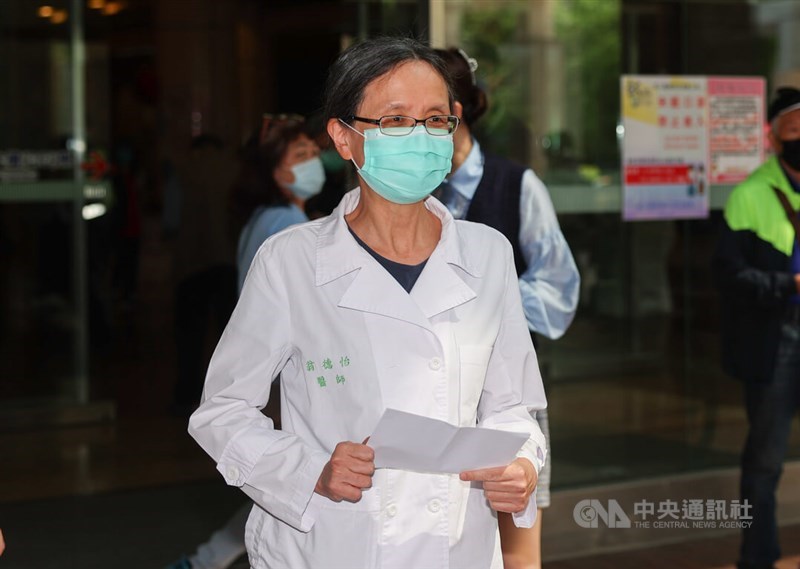Bongkrekic acid found in restaurant hit by food poisoning outbreak (update)

Taipei, April 2 (CNA) A toxin believed to be the key to a lethal food poisoning outbreak in a Taipei restaurant has been detected in one of the environmental samples taken from the restaurant's kitchen, confirming the presence of Bongkrecik acid in the restaurant, according to officials and experts on Tuesday.
At a press conference on Tuesday morning, Taipei Mayor Chiang Wan-an (蔣萬安) said the toxin, Bongkrekic acid, was found on samples collected from a chopping board, two knives, and one of the chef's hands in the Xinyi branch of Malaysian restaurant chain Polam Kopitiam on March 24.
Q&A/Four things to know about Bongkrekic acid
March 30: 2 conditions required for Bongkrekic acid to become lethal: Doctor
However, later Tuesday, Taipei Department of Health Deputy Commissioner Lee Pi-hui (李碧慧) confirmed to CNA that only the sample obtained from the chef's hand tested positive for Bongkrekic acid, while the chopping board and the two knives did not, with no explanation provided for the discrepancy.
Weng Te-i (翁德怡), director of National Taiwan University's Department and Graduate Institute of Forensic Medicine, the institution that conducted the tests for the Taipei City government, also told the press on Tuesday afternoon that the presence of Bongkrekic acid was only detected in the sample obtained from the hands of the chef.
It is likely the chef indirectly came into contact with the toxin, leaving traces on his hands, Weng said, adding that Bongkrekic acid is not a bacterium, so it would not proliferate if such contact existed, and would only leave trace amounts on the chef's hands after he touched ingredient with a high concentration of Bongkrekic acid.
Weng further explained that if the chef, with only trace amounts of the toxin on his hands, subsequently handled other ingredients, diners would then consume food made with ingredient containing a low concentration of Bongkrekic acid.
The severity of poisoning depends on the amount of Bongkrekic acid present in the food and the amount of food consumed by the individual, Weng added.

This is the first test result done at either the central or local government level to show the presence of Bongkrekic acid in the restaurant, possibly because the samples tested were from March 24, when Taipei did an initial inspection, instead of March 26, when the central government did its inspection and collected samples.
Deputy Health Minister Victor Wang (王必勝) said Tuesday the result suggested that the incident originated in the restaurant's kitchen.
He said the results were also consistent with the government's belief that the incident was confined to the restaurant's Xinyi branch.
At present, the central government is waiting for its own results of tests on environmental samples collected from the restaurant on March 26 to find Burkholderia gladioli, a bacterium known to produce Bongkrekic acid, Wang said.
Taipei Department of Health Commissioner Chen Yen-yuan (陳彥元) said he agreed with Wang, who previously speculated that the cause of the poisoning was likely the previous batch of flat rice noodles that were used up before food samples were collected on March 26.
Chen said all of the affected individuals consumed flat rice noodles, making it the most likely cause of the outbreak, but he did not offer any theory as to how the acid came to be present on the flat rice noodles.
When asked why the city only collected environmental samples and not food samples from the restaurant during its inspection on March 24, Chen said the inspectors did not find any cooked flat rice noodles at the time.
Chen said that based on directives from the Taiwan Food and Drug Administration (TFDA), confiscating all food ingredients from the restaurant was not required, so inspectors followed the guidelines and obtained only environmental samples.
When the city investigated the restaurant on March 24, it was aware of only one food poisoning case involving a man who ate at the restaurant on March 22 and was treated in a New Taipei hospital on March 23.
The man later died on March 24.
A total of 30 people fell ill after eating at the Xinyi branch between March 19 and March 24, according to Ministry of Health and Welfare figures as of 5:30 p.m. on Tuesday, and Bongkrekic acid has been found in 22 affected individuals, while the remaining eight are still undergoing testing for the toxin.
Of the 30 people, two have died, four are in critical condition, two remain hospitalized in a regular ward, and 22 have been discharged or did not require medical attention.
Related News
April 1: No toxin found in samples from restaurant in food poisoning incident
April 1: Two diners excluded from official count in food poisoning outbreak
March 31: Four more in food poisoning outbreak test positive for toxic acid
March 29: Owner of restaurant chain at center of food poisoning outbreak apologizes
March 29: Bongkrekic acid found in 8 food poisoning cases; none in food samples
March 27: Suspected food poisoning outbreak in Taipei restaurant leaves one dead
Focus Taiwan's coverage of food poinsoning incident in Taipei
- Society
Thousands of Muslims gather across Taiwan for Eid al-Fitr prayers
04/10/2024 05:13 PM - Politics
New Cabinet to respond to domestic, global challenges: Lai
04/10/2024 04:55 PM - Society
Electronic pet ID card launched by agriculture ministry
04/10/2024 04:51 PM - Business
U.S. dollar closes lower on Taipei forex market
04/10/2024 04:11 PM - Business
TSMC reports highest sales for Q1
04/10/2024 03:52 PM